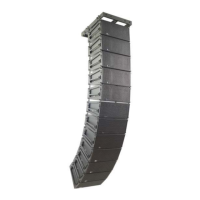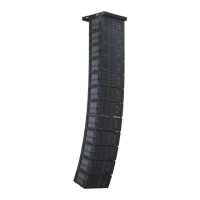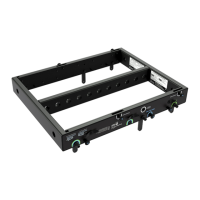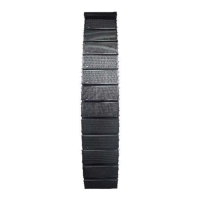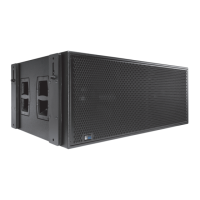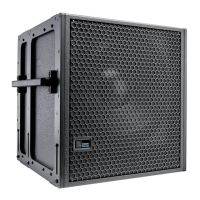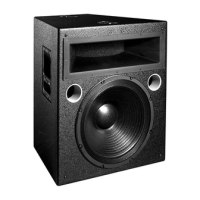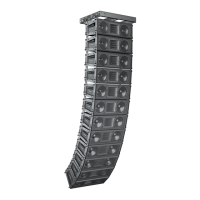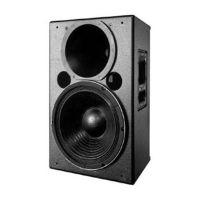LEOPARD OPERATING INSTRUCTIONS
39
APPENDIX C: SPECIFICATIONS
NOTE: Loudspeaker system predictions for coverage and SPL are available in Meyer Sound’s MAPP predic-
tion software.
LEOPARD Specifications
ACOUSTICAL
Operating Frequency Range 55 Hz – 18 kHz
Note: Recommended maximum operating frequency range. Response depends on load-
ing conditions and room acoustics.
Phase Response 92 Hz – 18 kHz ±30 degrees
Linear Peak SPL 133.5 dB (M-noise), 130 dB (Pink Noise), 134.5 dB (B-noise)
Note: Linear Peak SPL is measured in free-field at 4 m referred to 1 m. Loudspeaker SPL
compression measured with M-noise at the onset of limiting, 2-hour duration, and 50-
degree C ambient temperature is <2 dB.
M-noise is a full bandwidth (10 Hz–22.5 kHz) test signal developed by Meyer Sound to
better measure the loudspeaker’s music performance. It has a constant instantaneous
peak level in octave bands, a crest factor that increases with frequency, and a full band-
width Peak to RMS ratio of 18 dB.
Pink noise is a full bandwidth test signal with Peak to RMS ratio of 12.5 dB.
B-noise is a Meyer Sound test signal used to ensure measurements reflect system
behavior when reproducing the most common input spectrum, and to verify there is still
headroom over pink noise.
COVERAGE
Horizontal Coverage 110°
Vertical Coverage Varies, depending on array length and configuration
TRANSDUCERS
Low Frequency Two 9 in long-excursion cone drivers; 2 Ω nominal impedance
High Frequency One 3 in compression driver coupled to a constant-directivity horn through a patented
REM
®
manifold; 4 Ω nominal impedance.
AUDIO INPUT
Type Differential, electronically balanced
Maximum Common Mode Range ±15 V DC, clamped to earth for voltage transient protection
Connectors XLR 5-pin female with male loop output; XLR 3-pin female connectors available to
accommodate only balanced audio (no RMS signals)
Input Impedance 10 kΩ differential between pins 2 and 3
Wiring Pin 1: Chassis/earth through 1 kΩ, 1000 pF, 15 V clamped network to provide virtual
ground lift at audio frequencies
Pin 2: Signal (+)
Pin 3: Signal (–)
Pin 4: RMS (polarity insensitive)
Pin 5: RMS (polarity insensitive)
Case: Earth ground and chassis
Note: Pins 4 and 5 (RMS) included only with XLR 5-pin connector that accommodates
both balanced audio and RMS signals.
Nominal Input Sensitivity 6.0 dBV (2.0 V rms) continuous is typically the onset of limiting for noise and music
Input Level Audio source must be capable of producing +20 dBV (10 V rms) into 600 Ω to produce
the maximum peak SPL over the operating bandwidth of the loudspeaker
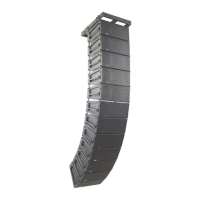
